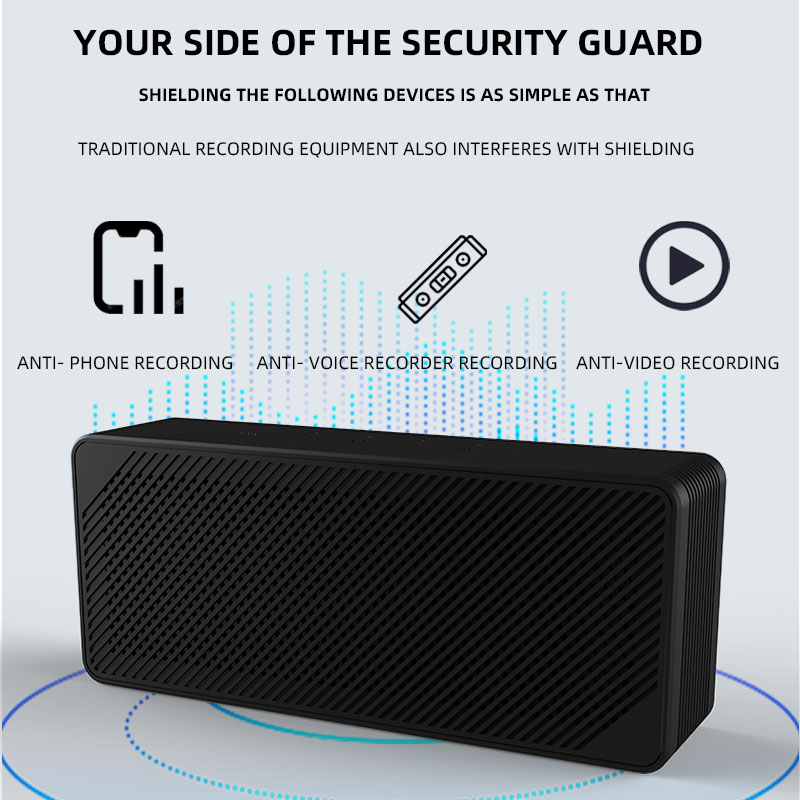Is there any way to block reocrding devices?
 Jul 01,2024
Jul 01,2024

 XinShengHeng
XinShengHeng
In today's information society, eavesdropping devices have increasingly become a potential threat to personal privacy and the disclosure of business secrets.
In order to protect the personal privacy and trade secrets of eavesdropping devices, it is essential to understand and learn how to interfere with eavesdropping devices. This article will introduce several effective methods of intercepting eavesdropping devices to improve communication security.
Understanding listening devices
Eavesdropping devices are devices used to steal other people's communication information, usually including acoustic microphones, radio microphones, telephone microphones, etc. These devices achieve the purpose of eavesdropping by collecting and analyzing communication signals from the target object. Understanding the working principle and characteristics of eavesdropping devices is a prerequisite for stopping them.
Physical isolation
Physical isolation is the most direct and effective way to interfere with monitoring devices. By isolating the target from the external environment, the listening device is isolated from the path to obtain information. Specific practices include:
The use of sound insulation materials: In communication environments that require confidentiality, the use of sound insulation materials (such as soundproof glass, soundproof walls, etc.) can effectively reduce the impact of acoustic errors.
Electromagnetic shielding: The use of electromagnetic shielding equipment (such as electromagnetic shielding tents, electromagnetic shielding boxes, etc.) can prevent radio failures from receiving communication signals.
Physical locking: Physically locking critical communications devices, such as safes and combination locks, prevents spies from accessing and installing eavesdropping devices.
Signal jamming method
The signal jamming method involves sending a jamming signal so that the error cannot receive or process the communication signal from the target object. Specific practices include:
Use a noise suppressor: A noise suppressor can emit a noise signal with a frequency similar to the target communication signal, interfering with the reception and processing of errors.
Use of frequency interceptors: Frequency interceptors can be used to interfere with communication signals in a specific frequency band so that errors cannot receive a valid communication signal.
Use of environmental noise: During communication, natural noise from the environment (such as wind, rain, etc.) can be used to interfere with the reception effect of insects.

Protection technology
The technology protection method is to improve the security and confidentiality of communication signals by using advanced communication technology and encryption means. Specific practices include:
Use encrypted communications: Communication applications or devices that use end-to-end encryption can ensure that the content of communications cannot be stolen by spies while in transit.
Using a virtual private network: A private network can create a secure tunnel for users to transmit data and hide the content of communications through encryption technology, preventing spies from intercepting and analyzing the communication data.
Identity technology and digital signatures: Identity technology and digital signatures can ensure the authenticity and integrity of the source's identity as content channels to avoid spies modifying or falsifying communication data.
Improve safety awareness
In addition to the above specific methods to interfere with eavesdropping devices, improving security awareness is also an important measure to prevent eavesdropping attacks. Specific practices include:
Careful handling of confidential information: During communication, avoid discussing confidential information in public or in an insecure environment to prevent spies from using eavesdropping devices to steal information.
Check communication equipment and environment regularly: Check communication equipment and environment regularly for abnormal conditions, such as sudden noise and signal instability, in order to detect and deal with potential eavesdropping risks in a timely manner.
Improve safety awareness




 Home
Home Drone Jammer
Drone Jammer  You May Also Like
You May Also Like

 Tel
Tel
 Email
Email
 Address
Address










